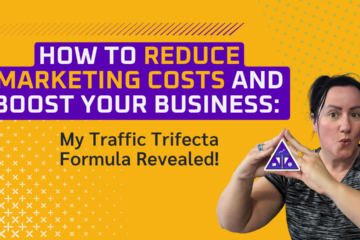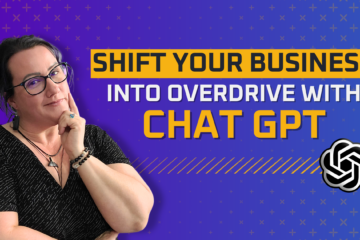How to Use Storytelling Techniques to Boost Your Online Business

Quick Links:
- TIP: How to master storytelling techniques [Infographic Download]
- Episode Overview – Storytelling Techniques for Creating Engaging Content
- Personal Note from Jenn Neal on Storytelling Technique Examples
- Episode audio [Podcast on Spotify]
- Blog Post – How To Use Digital Storytelling To Boost Your Online Business
- Related Posts
TIP: How to use storytelling techniques to boost your business
Reading Time: 5 minutes
Master Storytelling with these 6 steps
- Drama
something that happened that caused a change from the “ordinary”
- Shift
what was the new plan as a result of this drama
- Backstory
what was life like before the drama
- Transformation
what did you learn from the experience
- Core
what is the core emotion or value behind this story
- Practice the Story
start with drama, backstory, drama, shift, transformation and core – be real and vulnerable and dig into the details
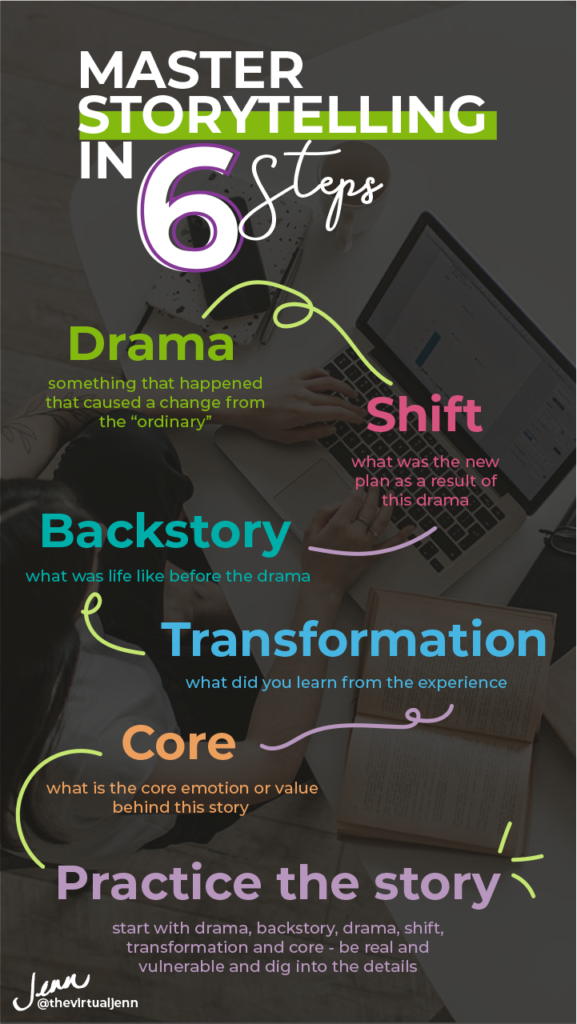
Love this graphic? Share It!
What’s In This Episode
In this digital age, we should all be using storytelling techniques as part of our digital marketing strategy. They’re a powerful tool that connects us with our target audience, helps us find more prospects, and generates more revenue. Many digital marketing experts swear by this approach. Let’s look into it!
I’m conquering the false beliefs of not knowing what to talk about, not feeling like an expert, or feeling like you have nothing exciting to talk about. Creating engaging social media posts starts with a good story. I review the basics of storytelling in marketing, the hero’s journey, and how to create an engaging content marketing plan. We get real, talk about the meaning of being vulnerable and how to use your stories in real transparency in your online marketing and social media.

Jenn Neal on Storytelling Techniques
Think about the deep rooted fears that are holding you back, in your business or your life.
-Jenn Neal
My First “Real Job” (The Backstory)
Do you remember the first job you ever had?
If you’re like me, I’m pretty sure it’s stuck in there somewhere.
My first “official” paying job not mowing lawns or babysitting was as the assistant for a chiropractor’s office.
I honestly don’t remember how old I was but it was pretty young – I think I was like 15 or 16 or something.
I was responsible for checking people in, setting them up on the tables with a heat pack and getting payment and rebooking them. Also, I kept the rooms cleaned and ready for the next person and then I helped to keep the books up.
In those days (yes, I’m actually dating myself like that) we kept the books and appointments not on a computer but actually printed ledgers.
I remember when the doctor first showed me the ledger. She opened up this gigantic binder that had bigger paper than I had ever seen – and showed me how to record numbers in black and red for debits and credits.
The Drama
It was like a completely different world! (In fact, I’m pretty sure that could the doctor have seen into my future and that accounting was the ONLY course I would fail in college she would probably have never let me near her books!)
I was SOOOO scared. What if I couldn’t do this? Why did she even think I could? I didn’t think I could – there were so many lines and numbers and it all felt so much more important than me or anything I should be trusted! There was nothing about me special enough to be allowed to even touch this amazing book!
The Shift
But – I had been raised to be professional and polite. So while internally I was screaming and wide eyed and thinking there was NO WAY I could do this… I listened and paid attention and I tried. And I kept trying. I would screw up and she would explain what I had done and how to not do that in the future.
Keeping her books eventually became ritual without any mistakes and she trusted me so much there was very little review! (Again, hindsight… not sure that was the best move on her part…)
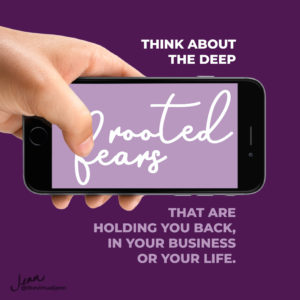
The Transformation
However, I am super grateful for that opportunity. See, I learned early on that I could be nearly paralyzed by fear. Fear of failure, fear of myself, fear or letting someone down. Impostor syndrome. BUT I could find a way through. The fears don’t have to live forever and stop me.
And this is a lesson that I took with me through other jobs and into owning my own business.
Do I still have fear? YES
Do I let it stop me? NO
Now, it’s just part of me and I allow myself to feel the fear, acknowledge it, and make a plan to CONQUER it. I’ve done it so much it’s become a way of life.
BUT
It’s something I see stopping clients and colleagues. The fear becomes an excuse. A stalling point. A place to live in “it’s not my fault” land. A place to hide and “wait for someone to give you the next steps.”
The Core
The truth is – we all have it in ourselves to find the way out. Past the fear. To turn it from a stumbling block to a standing block to get to the next step. (Wow, that’s pretty good, I just made that up!)
But – the truth is that overcoming fears and all of those self-doubts that hold us back is what I was after tackling in this episode.
Practice
I am using the hero’s journey as a guideline or steps to follow – but really, think about the deep rooted fears that are holding you back in your business or your life. Really dig deep and think of ways to overcome while you’re listening to this episode.
Because on the surface it’s about telling awesome stories using the hero’s journey – but really it’s about looking internally at the stories that are stopping you from realizing your true self.
🙂 And there you go. Gone deep. You’re welcome!
-Jenn “gone deep” Neal
How To Use Digital Storytelling To Boost Your Online Business
The Power of Digital Storytelling
Digital storytelling is a form of media production that allows us to share experiences through bite-sized content. It’s a somewhat new idea that lets everyday people tell their stories. Through entertaining digital formats, we can use this concept to boost our businesses.
The idea behind digital storytelling is to add a human aspect to our business. While we should include the usual product information, infographics, and authoritative articles in our business pages, we should also incorporate bits and pieces about who we are behind the scenes. We shouldn’t be afraid to let followers see our genuine, crazy, or funny side once in a while.
Let’s look at some of the online personalities who have used this relatable technique to their advantage.
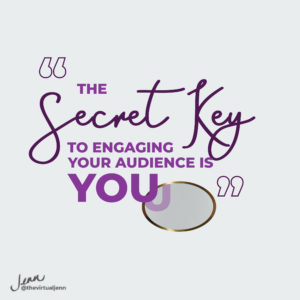
Meet Natalie Hodson
An influencer known for her unique ability to connect with women and their daily struggles, Natalie is a sought-after speaker who built a multi-million-dollar empire selling ebooks, membership sites, and courses.
She posts expert tips on pregnancy, fitness, and public speaking, but she also has clips that make her relatable to her audiences. Before she got her big break online, she was not afraid to share that some high-impact exercises make her pee her pants. Instead of keeping this information behind the scenes, she opened up to her followers and gained their trust.

Is Your Content Producing?
If you’d love to see how to reactivate the content you have already published to increase your traffic by over 300%, grow your social following and email list and slash your customer acquisition costs – don’t miss out on the Fast Track Workshop.
Brené Brown
Brené Brown is a research professor at the University of Houston, known for her TED talk called The Power of Vulnerability. Her research helped seal her status as a leadership guru, and giant corporations like IBM, Nutanix, and Pixar have hired her to share her wisdom and vulnerability. Some websites claim her speaking fees reach up to $90,000!
She starts her talk by sharing how insecure she got when an event planner wanted to call her a storyteller instead of a researcher. It’s probably this kind of openness that draws crowds to her, supporting her lectures, books, and podcasts.
The Advantages of Content Repurposing
One of the best things about digital storytelling is that we can tell engaging stories repeatedly through content repurposing.
Content repurposing, also called content recycling, is reusing elements of content to expand its reach. This process makes our content easier to scale. In other words, we don’t have to create every single post, blog, video, infographic, or webinar from scratch. We can turn particularly appealing content into many formats.

We usually worry about repeating a story, but it’s not a bad thing. For example, we can use the content from one of our old blogs as an infographic next month. Our brains process narratives differently, making our content appeal to people in varying ways. We can create powerful connections with properly-scheduled content.
Here are some tips for creating reusable content:
Use Evergreen Content With Your Marketing Strategy
When creating content, we should aim for evergreen — those that don’t go out of date. For example, instead of writing about the latest diet fads, we can make a generic post about ways to lose weight without dieting. Whatever year it is, the topic will still be relevant. We can also incorporate storytelling techniques with our evergreen content.
Go Through Old Social Media Marketing Posts
When we run out of content, we can check out old Facebook, Instagram, or Youtube posts. We can use the posts that are still relevant today, update the content, and repurpose them using storytelling techniques.
Break Up Digital Marketing Content Into Smaller Pieces
We can still use content from years ago, or even from three days ago, as long as we keep it relevant for our target audience. We can break down information-rich content, apply digital storytelling elements, and use it as new material.

Starting Your Digital Storytelling Journey
Once in a while, we should share content that goes beyond our business. Our target audience wants to see the genuine, crazy, and funny people behind our brand. Here are some content types we can use:
- Video: This is the most sought-after digital storytelling format. It works well with social media and mobile users because it lets audiences consume bits of valuable information that they can share on their pages.
- Listicles: These types of materials captivate readers through lists with catchy headlines. They are perfect with visuals.
- Web Stories: Google introduced this format as a modern form of storytelling. They are visually-rich and load fully on mobile screens.
Digital storytelling is one of the most cost-effective ways to find more prospects and generate revenue. Start your journey today to achieve new heights for your business.
Related Posts
The Importance of Connecting with your audience in marketing
